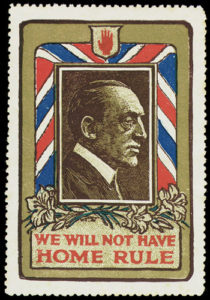
In the years leading up to World War I, the matter surrounding Ireland’s independence became a more controversial issue with the emergence of the Home Rule Bill of 1914. The Home Rule Bill, also called the Government of Ireland Act, promised to establish an Irish government, complete with a Parliament with a Senate and a House of Commons, with the head of the government being the King of England and the location of the Parliament being in Westminster. Since the Parliament was the most important location in decision-making, the fact that the Irish Parliament was located in England as opposed to in Ireland didn’t resonate with those who wanted complete independence from England. The disagreement created divisions within Ireland between those who wanted separation, called the nationalists, and those who wanted to stay connected to England, called the unionists. Both sides had members that both supported and disapproved of Home Rule, but overall, Home Rule was not widely accepted. Unionists objected the Bill because they did not want to be a part of the Irish Free State, while nationalists rejected the Bill because they believed that the proposed status of a “dominion” to be demeaning in comparison to full independence. The unionists who opposed Home Rule believed that until Ireland was truly free of English influence, Ireland would never truly know independence. The controversy surrounding the possible Partition of Ireland inspired many leaders of the Rising to create organizations in order to boost the morale of the Irish people and inspire them to rise against the British government. Shown on the stamp is Edward Carson, a famous Irish unionist who was the leader of the Ulster Unionist Party (UUP) and the Irish Unionist Alliance (IUA).
